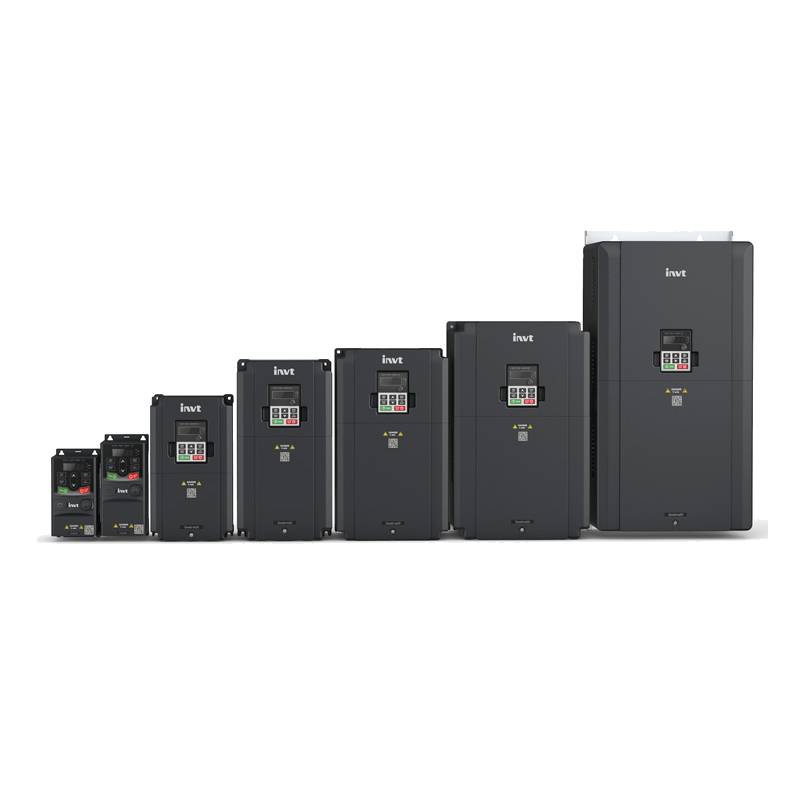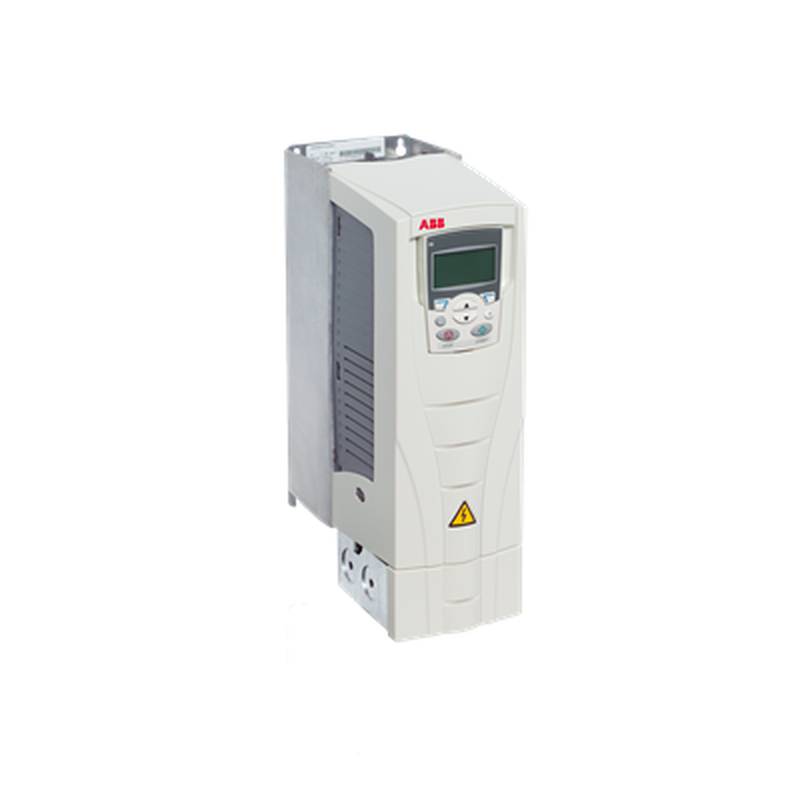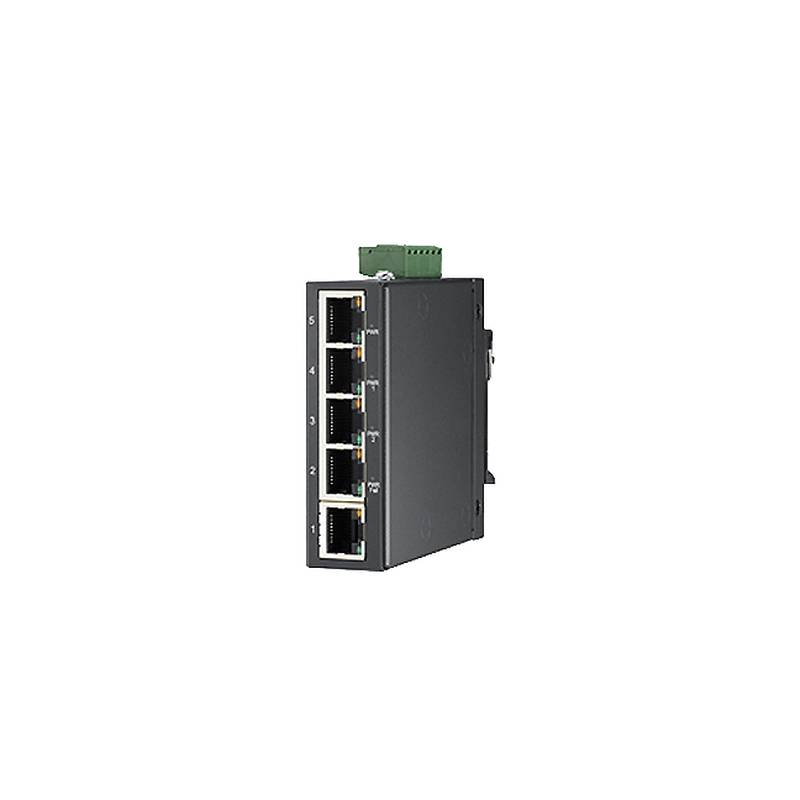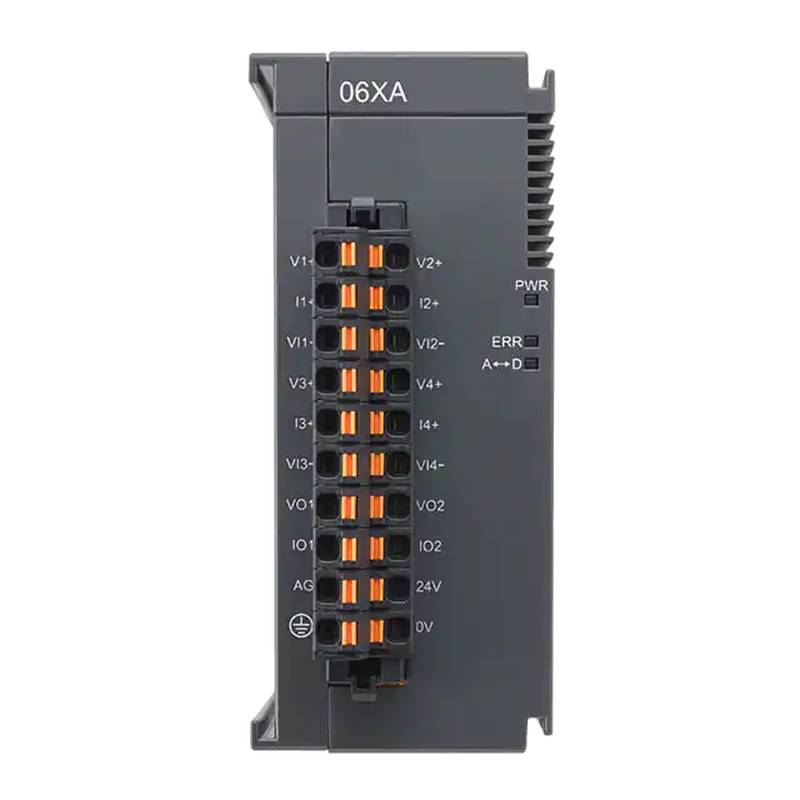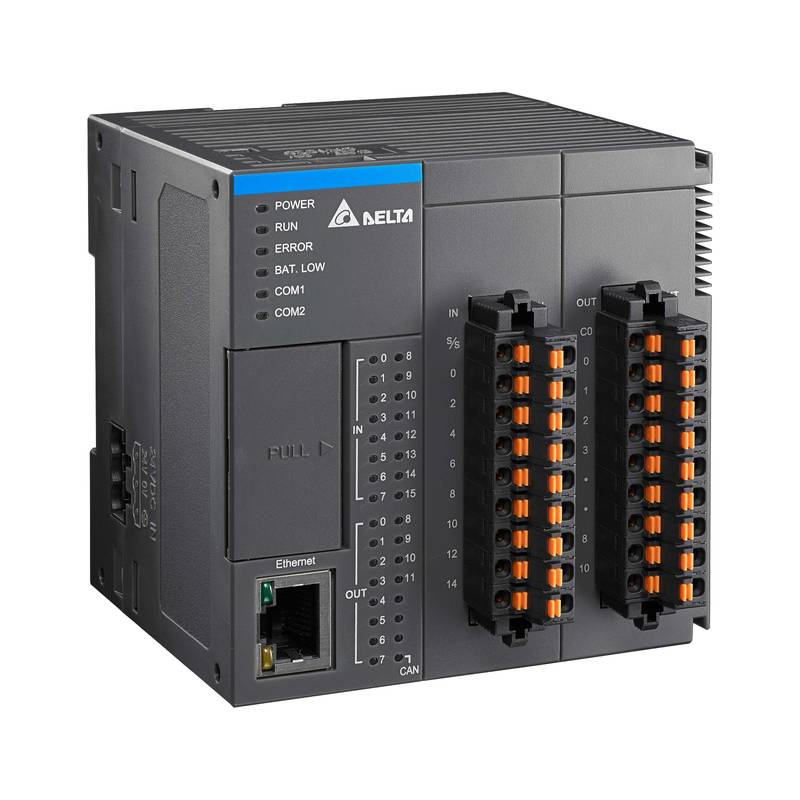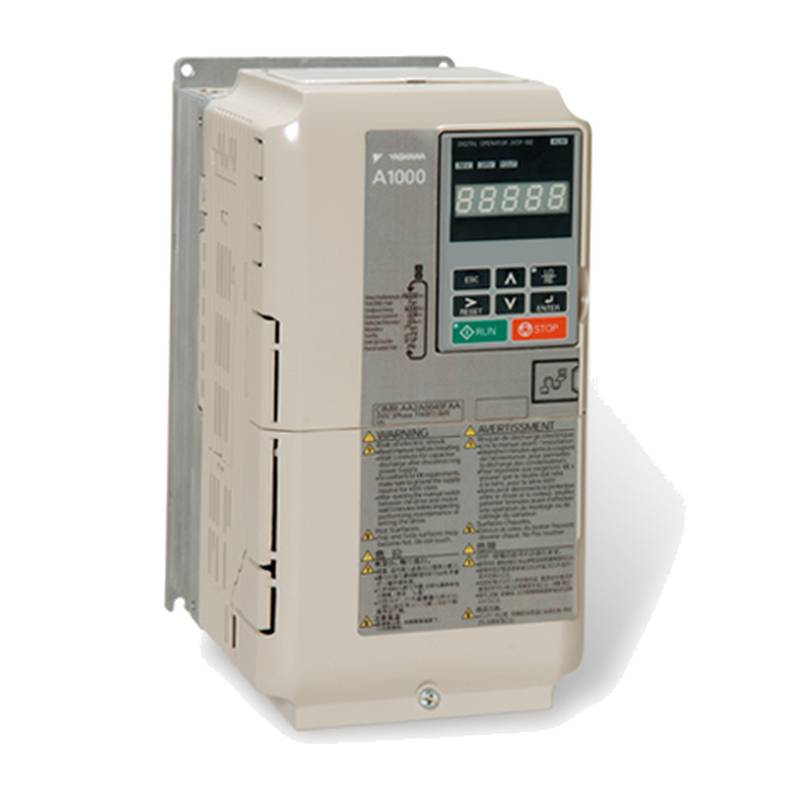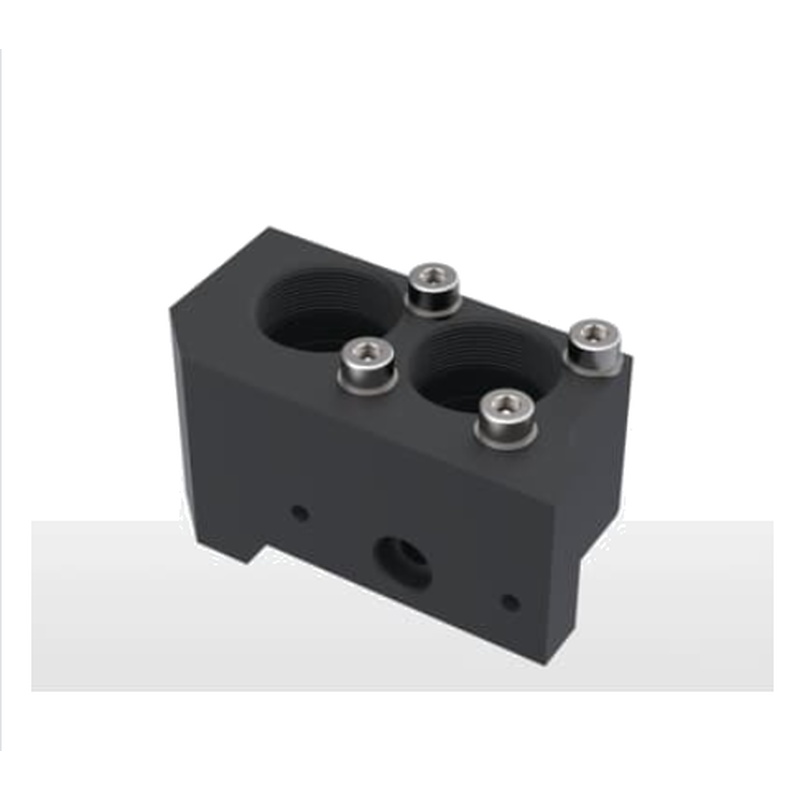
The INVT GD20-1R5G-4 is a high-efficiency, compact Variable Frequency Drive (VFD) designed to optimize motor control across a wide array of industrial applications. This robust unit offers a power rating of 1.5kW (2HP) and operates on a single-phase input (200-240V) to deliver three-phase output, making it an ideal solution for machinery requiring precise speed and torque regulation. Key advantages include its superior energy savings, compact footprint for easy integration, and advanced control algorithms for enhanced performance. The GD20-1R5G-4 boasts a maximum output frequency of 400Hz, multiple protection functions, and a user-friendly interface, positioning it as a reliable and cost-effective choice for demanding industrial environments.
Product Specifications
| Feature | Specification |
| :-------------------- | :------------------------------------------------ |
| Model | GD20-1R5G-4 |
| Rated Power | 1.5 kW (2 HP) |
| Input Voltage | Single-Phase 200V-240V AC |
| Output Voltage | Three-Phase 200V-240V AC |
| Output Frequency | 0-400 Hz |
| Control Method | Sensorless Vector Control, V/f Control |
| Overload Capacity | 150% of rated current for 60s |
| Communication Ports | RS485 (Optional) |
| Protection Features | Over-voltage, Under-voltage, Over-current, Overload, Overheat, Short Circuit, etc. |
| Ambient Temperature | -10°C to 40°C |
| Dimensions (H×W×D) | 150mm × 85mm × 125mm |
| Mounting | Wall-mounted or DIN rail |
Core Features & Market Positioning
The INVT GD20-1R5G-4 stands out in the competitive VFD market due to its emphasis on energy efficiency and control precision, particularly for single-phase input applications requiring three-phase output. Its sensorless vector control capability provides excellent torque response and speed accuracy, even under fluctuating loads, a feature often found in more expensive drives. This makes it a highly attractive option for small to medium-sized enterprises (SMEs) and specific machine builders seeking reliable performance without the complexity or cost of closed-loop systems. The drive's compact design is another significant advantage, allowing for space-saving installations in control cabinets and on machinery, reducing overall system footprint and installation costs. Its robust protection mechanisms also contribute to its market positioning as a durable and reliable component, minimizing downtime and maintenance requirements.
Key Application Scenarios
This INVT GD20-1R5G-4 VFD is exceptionally well-suited for a variety of industrial automation tasks where precise motor speed control is paramount. Common applications include fan and pump control, where its ability to adjust speed based on demand significantly reduces energy consumption. It is also ideal for conveyor systems, packaging machinery, and textile equipment, offering smooth acceleration and deceleration profiles to protect products and ensure operational continuity. Woodworking machinery, such as panel saws and routers, benefits from the drive's consistent speed under varying loads, leading to improved finish quality. Furthermore, its single-phase input compatibility makes it a practical choice for workshops and facilities where three-phase power is not readily available but three-phase motors are utilized.
Practical System Integration Guidance
Integrating the INVT GD20-1R5G-4 into existing systems is streamlined due to its user-friendly design and versatile mounting options, including wall or DIN rail installation. Proper wiring is crucial; ensure the single-phase input power (L, N) is connected to the designated terminals, and the three-phase motor leads (U, V, W) are connected to the output terminals. Grounding the drive and the motor is essential for safety and electromagnetic compatibility. For parameter configuration, the intuitive keypad interface allows for easy access to settings such as acceleration/deceleration times, base frequency, and maximum frequency. Advanced users can leverage the optional RS485 communication port for integration into SCADA systems or PLCs, enabling remote monitoring and control. Always refer to the official INVT GD20 manual for detailed wiring diagrams and parameter settings specific to your application.
Operation and Risk Mitigation
Safe operation of the INVT GD20-1R5G-4 VFD requires adherence to installation guidelines and parameter settings. Before powering on, verify all connections and ensure the motor is correctly wired and mechanically sound. The drive incorporates numerous protection functions to prevent damage; common faults like over-current (OC), over-voltage (OV), and over-temperature (OT) are typically indicated on the display and can be cleared after addressing the root cause. For instance, an OC fault might necessitate reducing the acceleration time or motor load, while an OV fault could indicate high input voltage or regenerative braking issues. Regular inspection of ventilation and ensuring the drive operates within its specified ambient temperature range are critical for preventing thermal faults. Always disconnect power before performing any maintenance or troubleshooting.
Scalability & Long-Term Value
The INVT GD20-1R5G-4 offers significant long-term value through its robust design and compatibility with industrial communication standards. While it is a compact unit, its core technology is scalable, allowing users to implement similar control strategies across larger or more complex systems using other INVT drive series. The availability of an RS485 communication interface opens avenues for integration into Industry 4.0 initiatives, enabling data acquisition for performance monitoring, predictive maintenance, and energy management when linked with higher-level control systems. This forward-looking capability ensures that investments in INVT drives can be part of a comprehensive digital transformation strategy, enhancing operational efficiency and extending the lifespan of connected machinery.
FAQs
1. What is the primary benefit of using the INVT GD20-1R5G-4 VFD?
The main advantage is its ability to efficiently control three-phase motors from a single-phase power supply. This reduces energy consumption significantly compared to direct-on-line starters.
It provides precise speed and torque control, improving process accuracy and product quality. The compact design also simplifies installation in space-constrained environments.
This VFD offers robust protection features and a user-friendly interface, minimizing downtime and maintenance needs for industrial operations.
2. Can the INVT GD20-1R5G-4 drive a 1.5kW three-phase motor from a standard household single-phase outlet?
Yes, provided the outlet is rated for the required current draw, which can be higher than the motor's nameplate due to VFD operation. It's crucial to check the total current demand against the circuit breaker and wiring capacity.
The drive converts single-phase input to a three-phase output, enabling the operation of standard three-phase induction motors from a single-phase source. This is a key feature for many workshops.
Always ensure proper grounding and consult an electrician to verify that the single-phase circuit can safely handle the VFD's input current, especially during startup and peak loads.
3. What types of motors are compatible with the INVT GD20-1R5G-4?
This VFD is designed to control standard three-phase asynchronous induction motors. It is not intended for use with single-phase motors or specialized synchronous motors.
It supports both sensorless vector control and V/f control modes, allowing compatibility with a wide range of motor characteristics and application requirements.
Ensure the motor's voltage and frequency ratings match the drive's output capabilities (200-240V, up to 400Hz) for optimal performance and to avoid damage.
4. How do I set up basic speed control on the INVT GD20-1R5G-4?
Connect the motor and power supply according to the manual, then access parameter group 01 to set the desired maximum frequency and base frequency. Ensure the control mode is set appropriately.
Set parameter P01.00 to 1 for keypad control, then use the UP/DOWN keys to adjust the speed on the display. Parameter P01.01 sets the maximum output frequency.
For automatic operation, configure external control terminals (e.g., digital inputs for start/stop, analog input for speed reference) via parameter group 02 and ensure P01.00 is set for external control.
5. What are the typical causes of an "OC" (Overcurrent) fault on the GD20-1R5G-4?
Overcurrent faults usually stem from excessive load on the motor, such as starting under heavy load or a jammed mechanism. It can also be caused by excessively fast acceleration settings.
Incorrect motor parameters or a motor with a short circuit can also trigger an OC fault. Check motor wiring and ensure it matches the VFD's capabilities.
The VFD has a specific overload limit; exceeding this for too long will trip the fault. Consider reducing the motor load, increasing acceleration time, or verifying motor health.
6. How can I connect the INVT GD20-1R5G-4 to a PLC for remote control?
Utilize the optional RS485 communication interface with a Modbus RTU protocol. Connect the A/B lines from the VFD to the PLC's serial port.
Configure the VFD's communication parameters (address, baud rate, parity) in parameter group 09 to match the PLC's settings. Ensure you have the correct Modbus register map.
Program the PLC to send control commands (start/stop, speed reference) and read status information (faults, speed feedback) from the GD20 drive using the established Modbus communication.
7. Does the INVT GD20-1R5G-4 support regenerative braking?
The standard GD20 series, including the GD20-1R5G-4, does not typically incorporate built-in regenerative braking capabilities for returning energy to the supply. It may have dynamic braking resistors for energy dissipation.
For applications requiring significant braking torque or energy recovery, external braking modules or specialized drive features would be necessary. Check advanced drive options.
Energy is primarily dissipated as heat through an optional external braking resistor when the motor is decelerating rapidly or generating power. This prevents over-voltage faults.
8. What is the maximum output frequency supported by the GD20-1R5G-4?
The INVT GD20-1R5G-4 is capable of operating motors at an output frequency of up to 400 Hz. This allows for high-speed applications.
This high-frequency capability is particularly useful in applications like high-speed spindles or certain types of pumps where elevated rotational speeds are required.
It's important to note that running motors at very high frequencies may require specific motor designs and considerations for mechanical integrity and cooling.
9. How do I perform a factory reset on the INVT GD20-1R5G-4?
Navigate to parameter group 15, which is dedicated to system parameters. Locate the factory reset function within this group.
Set the specific parameter for factory reset to the value that initiates the reset process, usually '1' or 'Y'. Confirm the action when prompted.
After the reset, all parameters will revert to their default factory settings. You will need to reconfigure essential parameters like motor data and control settings for your application.
10. What is the typical operating temperature range for the INVT GD20-1R5G-4?
The drive is designed to operate reliably within an ambient temperature range of -10°C to 40°C. This covers most standard industrial environments.
Exceeding the upper limit of 40°C can lead to thermal derating or tripping due to over-temperature protection. Ensure adequate ventilation.
Operating below -10°C might affect component performance or require specific startup procedures. Always refer to the manual for extended temperature operation guidelines.














